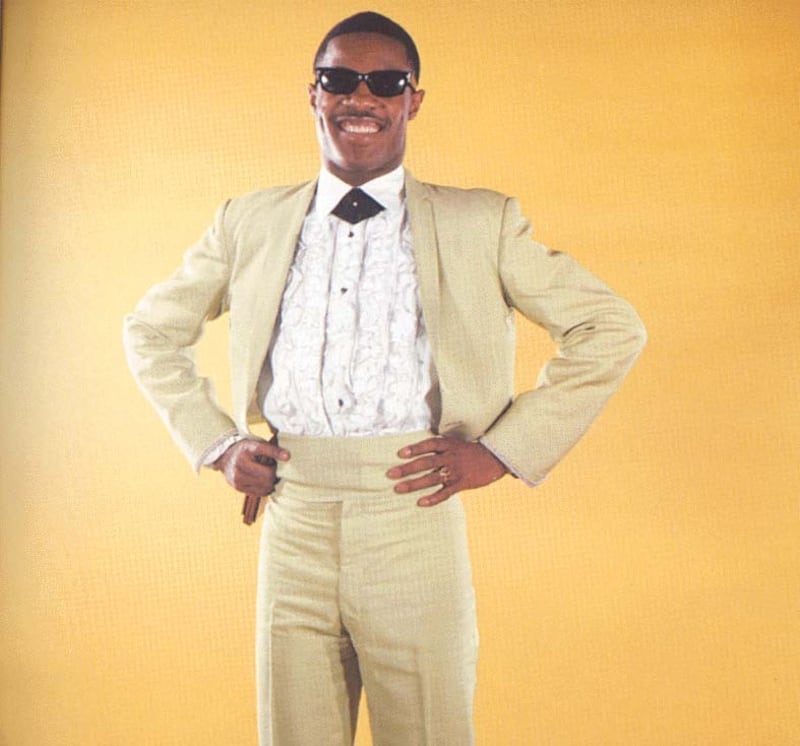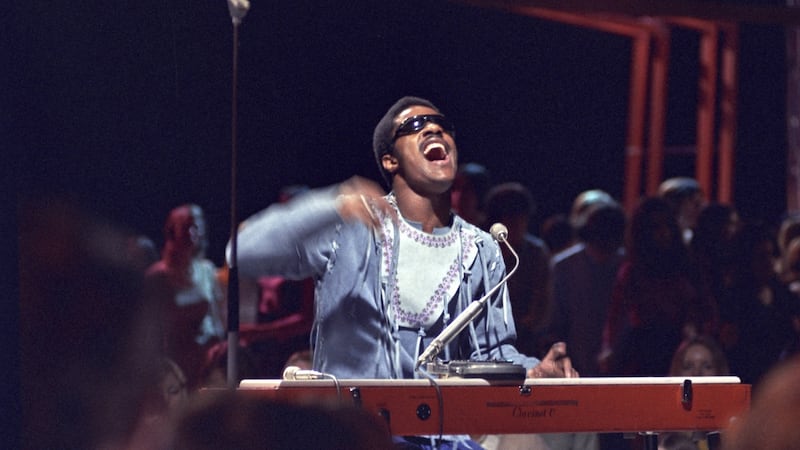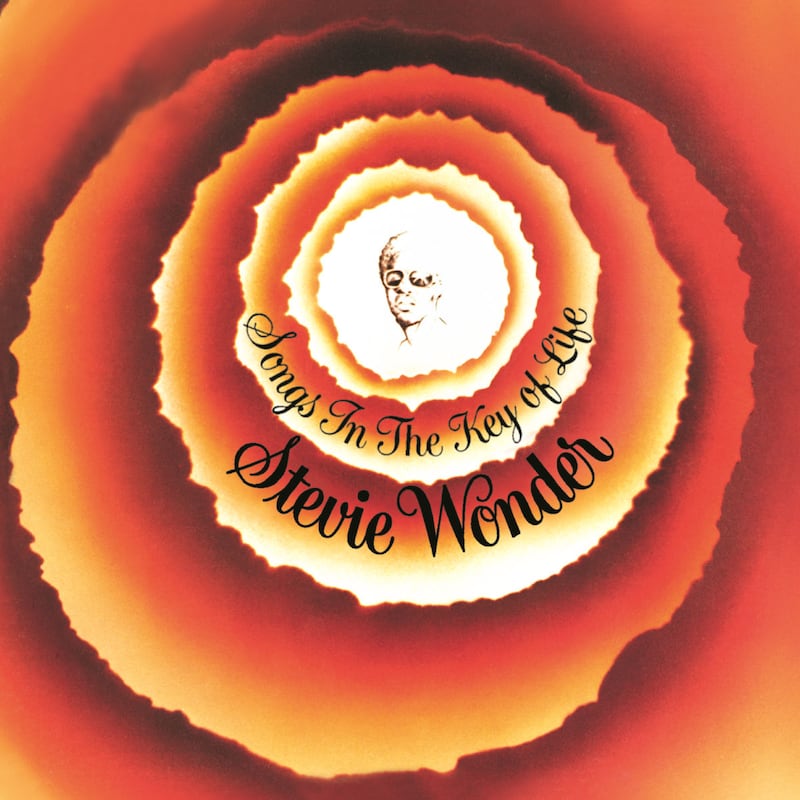25. With A Song In My Heart (1963)
Who wants to hear a 12-year-old singing Great American Songbook standards? Apparently Berry Gordy, whose big – and baffling – idea seemed to be that Wonder should go into cabaret, as evidenced by these syrupy orchestral selections. Wonder gives it his best shot, but they are way beyond his abilities.
24. Eivets Rednow (1968)
A curio: an album of harmonica instrumentals, released off the back of a minor hit version of Bacharach and David’s Alfie, with Wonder’s name pseudonymously spelt backwards. It came out on Motown’s Mo Jazz subsidiary, but its contents are closer to easy listening.

23. Stevie on the Beach (1964)
Wonder was later mortified by this stage of his early career, when he acquiesced to some deeply naff ideas. He was particularly irked by a perky novelty track here called Hey Mr Harmonica Man, which is indeed pretty excruciating: the rest isn’t as bad as that, although its appeal is definitely kitschy.
22. Someday at Christmas (1967)
There is a generous helping of schmaltz here – not least his version of Silver Bells, which sounds like pre-second world war pop – but there is also the troubled title track, which seems to have as much to do with the Vietnam war as Christmas, and the great closer, What Christmas Means to Me, which offers seasonal good cheer without an accompanying sugar overdose.
21. Characters (1987)
Characters was cut from the same local-radio-friendly cloth as its predecessor, 1985’s million-selling In Square Circle: diehard fans with time on their hands could probably pick through it and make a case for the funky Dark ’n’ Lovely and Skeletons, but it is hard to see why you would play the latter when you could play Superstition instead.
20. I Was Made to Love Her (1967)
The superb title track was Wonder’s biggest hit of the 60s, but the subsequent album was hurriedly thrown together to capitalise on it. You can tell – there are a lot of hastily knocked-off covers – although Wonder’s version of Holland-Dozier-Holland’s Baby Don’t You Do It is fantastic.
19. The Jazz Soul of Little Stevie (1962)
On one level, Stevie Wonder’s debut album is extraordinary. He was 11 when he cut these dancefloor jazz instrumentals, audibly designed to show off his prowess on keyboards, harmonica and percussion: moreover, he co-wrote one of its best tracks, Wondering. On another, it is not hugely characterful: the opener Fingertips is better heard in the unbound and extended hit live version recorded a year later.

18. In Square Circle (1985)
I Just Called to Say I Love You’s success seemed to turn Wonder’s head, which explains how an artist who spent the 70s at the cutting edge settled comfortably into the middle of the road. Flashes of the old greatness can be heard on Spiritual Walkers and Overjoyed, but In Square Circle offered pretty slim pickings, and the antiseptic mid-80s production does it no favours at all.
17. The Woman in Red (1984)
The point at which things get tricky. The corny, jingle-like I Just Called to Say I Love You (which, in its album version, goes on for about three weeks) won an Oscar and became Wonder’s biggest single, which tends to overshadow The Woman in Red’s admittedly scattered highlights, not least Love Light in Flight’s polished-but-potent 80s boogie.
16. My Cherie Amour (1969)
At this stage, Wonder still didn’t always pen his own singles, but the quality of his albums was increasingly defined by how many times his name showed up in the writing credits. Certainly, the best non-single tracks here – Somebody Knows, Somebody Cares and Angie Girl – have his signature on them.
15. Music From the Movie Jungle Fever (1992)
A commission to score Spike Lee’s film seemed to shake Wonder out of his 80s doldrums, at least partially: Lighting Up the Candles and These Three Words suggested that his ballads now came with syrup as standard, but Each Other’s Throats was harder-hitting funk than he had recorded in a decade, and came with the distinct intimation that he had been listening to Prince.
14. Down To Earth (1966)
A relative flop, Wonder’s second album of 1966 still shows him maturing at a startling rate. Be Cool, Be Calm (And Keep Yourself Together) is a bit too close to Uptight for comfort, but Sylvia is a great show-stopping ballad, his version of Mr Tambourine Man is great, and his voice was getting richer and tougher with each album.
13. Conversation Peace (1995)
Odd as it is to hear someone who was once an agenda-setter playing catch-up, Conversation Peace’s lunge for contemporaneity – hip-hop-inspired beats, a hint of dancehall on Tomorrow Robins Will Sing – works quite well. The songs are mostly stronger than his 80s work; the jazzy R&B of Sensuous Whisper is great.
12. For Once In My Life (1968)
Wonder’s late 60s albums were still clearly something of an afterthought, padded out with filler covers. But there are fewer than before here and some of Wonder’s co-authored album tracks are as good as his singles: Do I Love Her is coolly sophisticated; I Don’t Know Why builds thrillingly; and You Met Your Match is a tough funk strut, its keyboard playing a signpost towards Superstition.
11. Stevie Wonder’s Journey Through the Secret Life of Plants (1979)
Met with bafflement on release, time has been kind to Wonder’s oft-reviled film soundtrack, where exploratory synth instrumentals met songs packed full of lyrical mysticism/mumbo-jumbo. It is not all great, but when it is – A Seed’s a Star/Tree Medley, Race Babbling’s avant-disco/proto-techno – it is really great.

10. Up-Tight (1966)
With Motown clearly unsure what to do with him, Wonder began slowly taking charge of his own career, demonstrating a self-assurance that wasn't always appreciated by his label. But it yielded immediate results: he started producing himself, co-wrote the brilliant title track and made a bold attempt to cover Bob Dylan's Blowin' In the Wind in gospel-soul style.
9. Signed, Sealed & Delivered (1970)
By now, Wonder was clearly straining at the confines of the standard Motown album. Heaven Help Us All was troubled and gospel-influenced; You Can’t Judge a Book by Its Cover could have fitted on any of his subsequent albums; and his distorted version of We Can Work It Out transforms it from a love song into something more socially concerned.
8. A Time to Love (2005)
A late-period return to form, or something close: the more organic sound suits him and there is a real fire about So What the Fuss and If Your Love Cannot Be Moved. Please Don’t Hurt My Baby, meanwhile, reworks What’s That You’re Doing?, a fantastic 1982 collaboration with Paul McCartney bafflingly overshadowed by the ghastly Ebony and Ivory.
7. Where I’m Coming From (1971)
Not as consistent as what was to follow and hampered by weedy production, Where I’m Coming From was still Wonder’s best, most expansive album at the time: joyous pop alongside dense, paranoid synthy funk, and in I Never Thought You’d Leave in Summer and the seven-minute Sunshine in Their Eyes, an emotional sucker-punch climax.
6. Hotter Than July (1980)
It says a great deal about Wonder’s 1970s work that an album as good as Hotter Than July was greeted as a mild disappointment. Happy Birthday saw him indulging in tinny, rounded-edged synthpop, but its heights – I Ain’t Gonna Stand For It, All I Do, Lately – are still pretty skyscraping.
5. Music of My Mind (1972)
Aged 21, relocated to New York and with a renegotiated Motown contract in hand, on Music of My Mind, Wonder was off the leash. He wrote every song, played virtually every instrument, experimented wildly – not least with electronics – and for the first time, made an album, rather than a collection of tracks: one of the all-time great hot streaks in pop history begins here.
4. Fulfillingness’ First Finale (1974)
Between 1972 and 1976, Wonder released nothing but unequivocal masterpieces: arranging them into a Top 4 isn’t really about quality, just personal preference. Fulfillingness is more about romance than its predecessors, but You Haven’t Done Nothin’s farewell to Nixon might be his most ferocious blast of political ire.
3. Talking Book (1972)
An album that took the freedom, bold experimentation and one-man-band approach of Music of My Mind and added laser-sharp songwriting focus, Talking Book’s songs alternately detailed the collapse of his marriage to collaborator Syreeta Wright – who contributed two lyrics – and, on Big Brother and the peerless Superstition, outlined an increasingly sharp social consciousness.
2. Innervisions (1973)
Its centrepiece is Living for the City’s raw examination of systemic racism, but Innervisions has everything, from luscious love songs (Golden Lady) to disarmingly gentle excoriations of the US president (He’s Misstra Know It All), by way of Higher Ground, the funkiest song ever written about reincarnation. This is an awesome album.

1. Songs in the Key of Life (1976)
From Curtis Mayfield to George Clinton, no genre is more overburdened with no-further-questions geniuses than soul music in the 70s, but even in that climate, Wonder stood out. Songs in the Key of Life shows why. It’s not a better album than Innervisions per se, but it clinches the top spot by dint of its breadth and consistency: a rare double album where the quality never lags. Its sheer ambition knocks you sideways – Village Ghetto Land set nightmarish social reportage to, of all things, mock-baroque synthesizer – Guardian


















